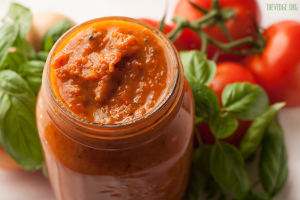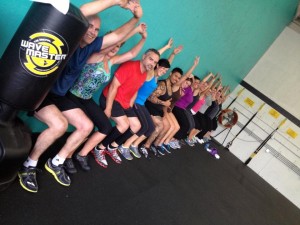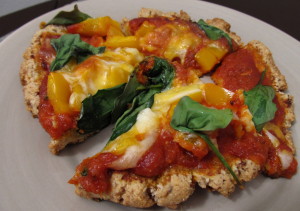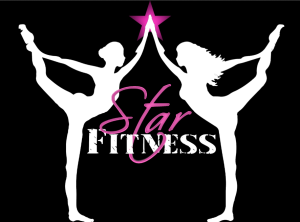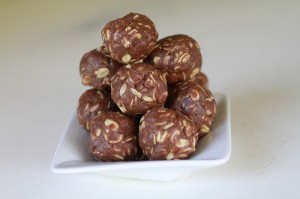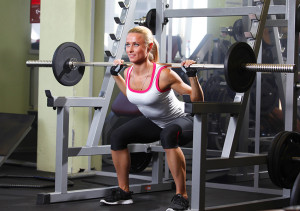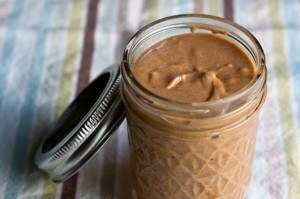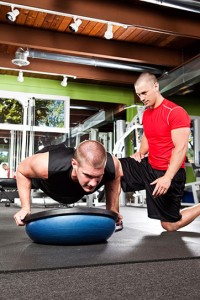DESKERCISE! Tips and Tricks to Exercise at Work
Remember the days when “work” meant manual labor with a side of sweat, blood, and tears? Neither do we. These days, it seems we’re more likely to log hour after idle hour with our bums glued to our seats. And while you may be an Excel champ by day and gym rat by night, you’re still sitting at your desk for upwards of 8 hours and only getting around an hour of gym time.
So what’s a worker chained to his/her desk supposed to do? Luckily, short bouts of aerobics, strength exercises, and stretching in between conference calls and emails can help improve fitness levels and heart health as well.
CARDIO
The Twinkle Toe
Tap into your inner Fred Astaire by speedily tapping those toes on the floor. Or a harder version: stand in front of a small trashcan and lift up those legs to tap the toes on it’s edge, alternating feet, in soccer-drill fashion.
Stair Master
Want to avoid elevator small talk in favor of elevating the heart rate? TAKE THE STAIRS! Accelerate on the straight-away and take two at a time on every other flight for a real leg burn.
The Slog, Then Jog
Instead of slogging away for hours nonstop, take a mini break for a stationary jog. Pop up from your chair and jog in place. Willing to work a little harder? Pick up those knees. Continue for a minute, return to your spreadsheet, and repeat.
The Cubicle Wanderer
Walking during work is completely underrated. Take a stroll down the hall to catch up with coworkers or welcome a new employee. Or, instead of dialing extensions and sending lazy emails to the manager two doors down, put in some face time.
The Mover and Shaker
There’s nothing wrong with a brief moment to get your groove on. Release stress and spark some energy with a quick bout of dancing.
LEGS and BUTT
The Wall Sit
Wall sits are great for building strength and endurance. Standing with your back against the wall, bend the knees and slide your back down the wall until your thighs are parallel to the floor. Sit and hold for 30-60 seconds. Extra burn- try crossing the right ankle over the left knee, hold for 15 seconds, then switch sides. Fun Fact- the world record for wall sits was 12 hours!!
The Patient Printer
The boss wants a 200-page presentation printed perfectly. Why stand around lazily waiting when you could be sculpting your calves with calf raises? Stand with feet shoulder-width apart, press up onto the tippy toes, pause at the top, and then lower back down. Repeat for three sets of 12-15 reps or until the printing, faxing, or scanning is done. Level up with raising only on leg at a time!
The Seated Leg Raise
They’re hardly noticeable underneath the desk. While seated, straighten one or both legs and hold in place for 5-10 seconds. Then lower to the ground without touching the floor. Repeat (alternating legs if raising them separately) for 15 reps. Underwhelmed? Loop a purse or briefcase strap over the ankle for added weight.
The Desk Squat
Start standing with feet should width apart (and the desk chair pushed out of the way). Bend the knees slightly so the thighs are almost parallel to the ground, as if sitting in a chair. Complete 12-15 reps and repeat for 3-4 rounds.
The Lunch Break Hammy
Strengthen your hamstrings with a standing leg curl. Stand behind your chair and hold onto it for support. Gently kick on foot back, aiming the heel for the top of your thigh. Lower the foot back down slowly and repeat exercise with other leg. Do 10 reps, take a bite of your lunch and then do 10 more.
SHOULDERS and ARMS
Cubicle Dip
Tricep dips can be done almost anywhere, including the office. Use a sturdy desk or a non-rolling chair; sit at the very edge and place hands on either side of the body while gripping the chair’s edge. With your feet planted on the floor take a step or two away from the desk or chair; straighten up the arms to lift up the body. Next, bend the arms to reach a 90-degree angle so that your body dips down, hold, and re-straighten while keeping the body raised above the chair. Complete 8-10 reps.
Say a Prayer
Whether you’re praying for a project extension or more defined arms. Sit in your chair with feet flat on the floor, bring the palms together in front of the chest and push both hands together powerfully until you feel the arm muscles contract. Hold for 15-20 seconds. Release and repeat the sequence until you feel the burn.
Shadow Boxing
Stand and throw out a few jabs, hooks, and uppercuts in rapid succession while feet are moving (like a boxer). Continue for a minute, rest, and repeat.
The Flapper
Standing feet shoulder width apart, slight bend in the knees, and bend forward. Place arms at your side with your palms facing toward the ceiling. Pulse the arms for 30 seconds and repeat 3-4 rounds.
The Casual Push Up
Casually place hands against the wall, shoulder width apart, and feet away from the wall in a diagonal position. Lean into the wall, just as you would do a push up, and then push back out. Do 15 reps for 2-3 rounds.
CORE
The Desk Chair Swivel
Use the swivel to your advantage. Sitting upright on the edge of your chair with your feet hovering over the floor, hold the edge of your desk with your fingers and thumb. Next, use your core to swivel the chair from side to side. Complete 15 reps and repeat 2-3 rounds.
Flutter Kicks
Sitting on the edge of your seat, lean your upper body away from your knees, and hands lightly grasping either side of your chair. Lift your legs about 8 inches off of the ground. Rapidly flutter kick your toes for 30 seconds, rest and repeat for 3-4 rounds.
Leg Pull-Ins
These are a lower ab exercise and are commonly done on an exercise bench. Sit on the front part of your chair and extend your legs out straight in front of your body. Grab the edges of the chair behind your buttocks, lift your legs 6 inches off the floor and lean back slightly. Pull your knees into your chest as you lean forward. Squeeze forcefully, extend your legs back out and repeat.
Plank
Place your hands on the edges of your chair or work desk and walk your feet backwards until your body forms an angle. Place your toes hip-width apart and lift your hips in the air to form a straight line from your shoulders to you heels. Hold for 30 to 45 seconds.
Sitting
An exercise ball is a fitness tool that you can use to replace your chair to work your abs and core. While sitting on a ball at your desk, you can improve your balance and tone your core muscles. Sit up straight on the ball with your feet planted firmly on the floor. Feel your abs contracting to yourself in good alignment. While seated on the ball, move your hips around in circular motions. Do a set going clockwise then change and do a set going counterclockwise.


